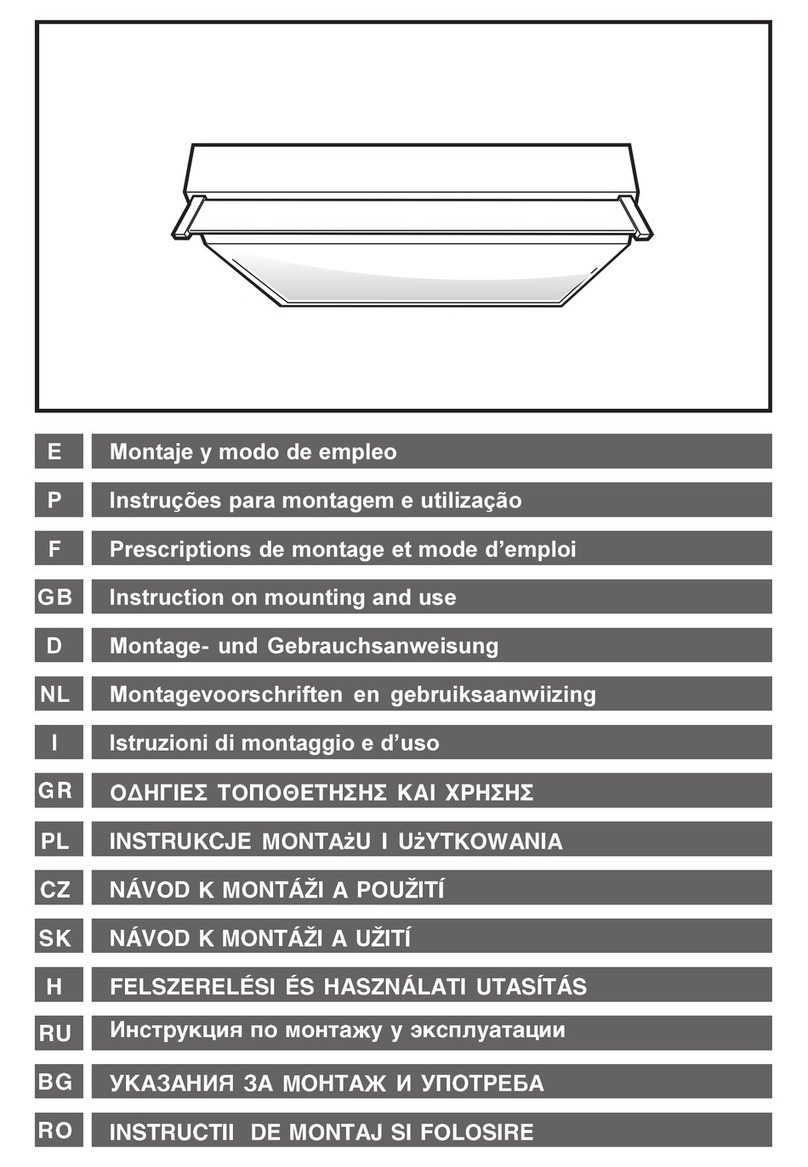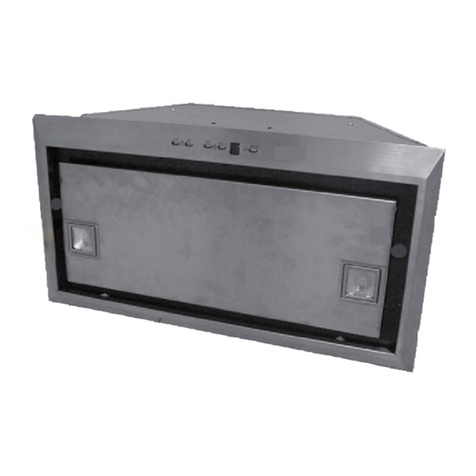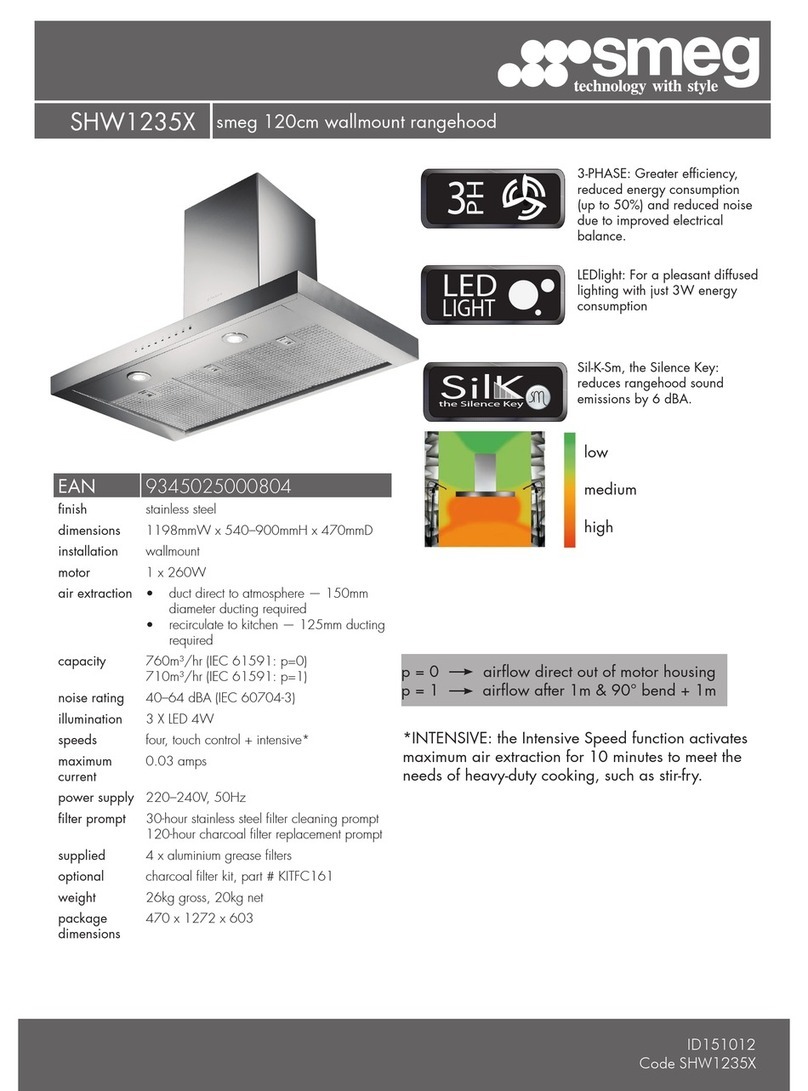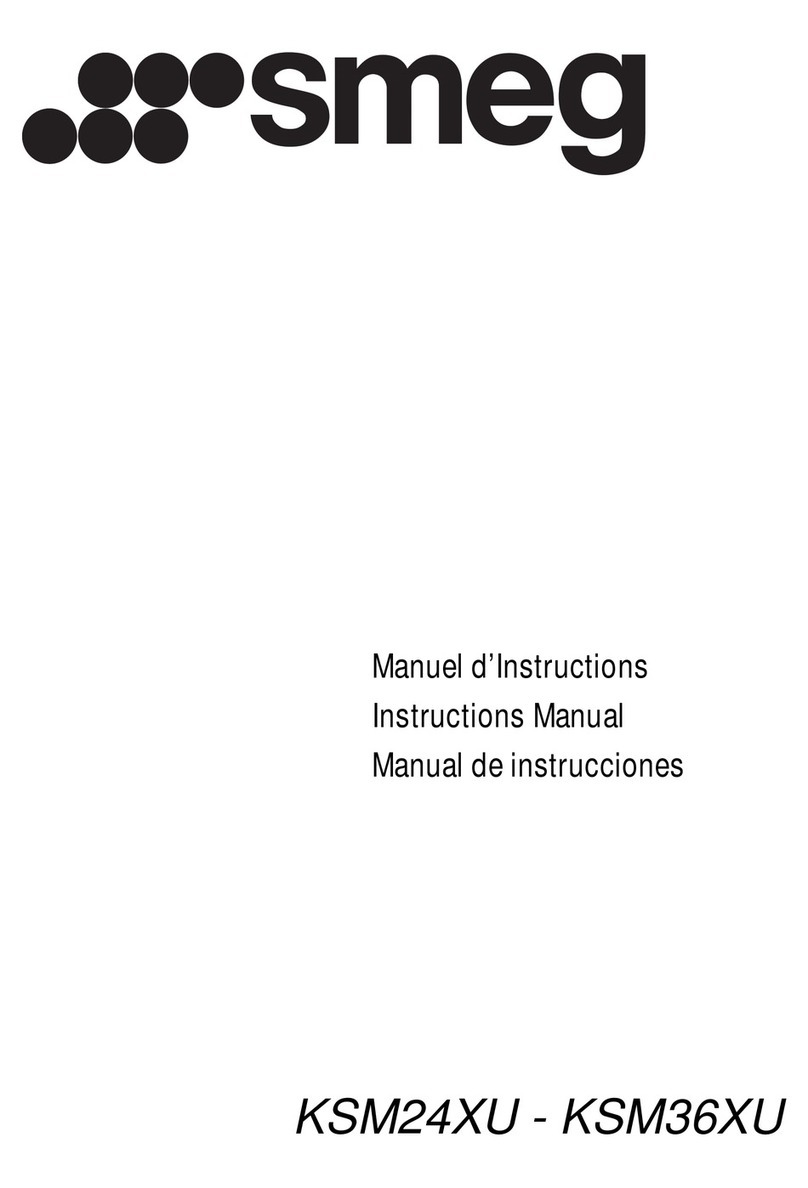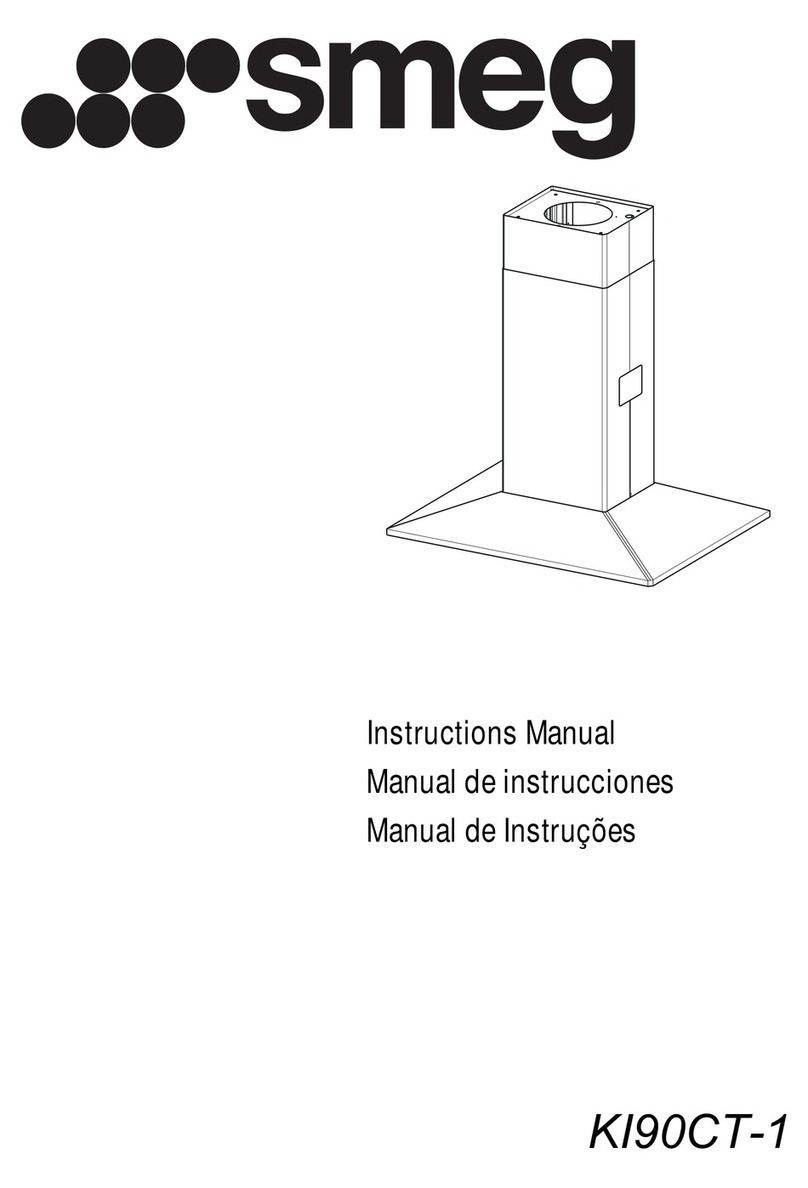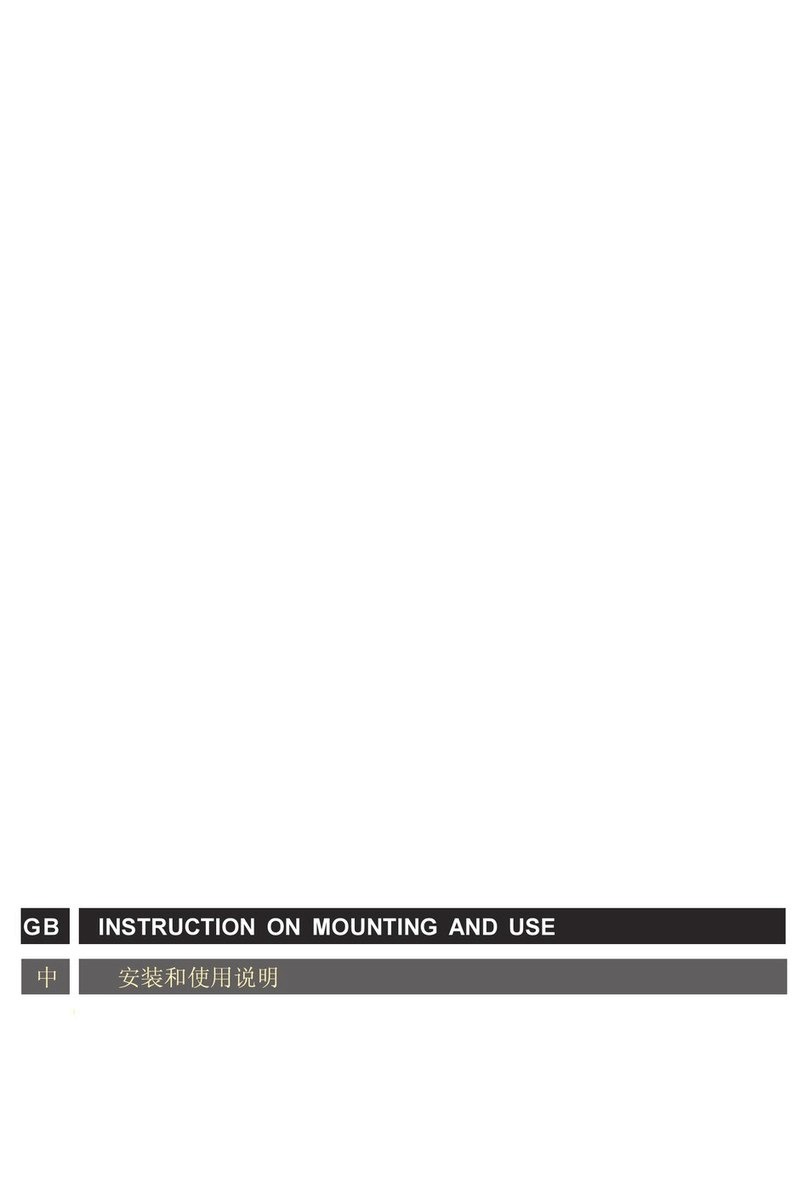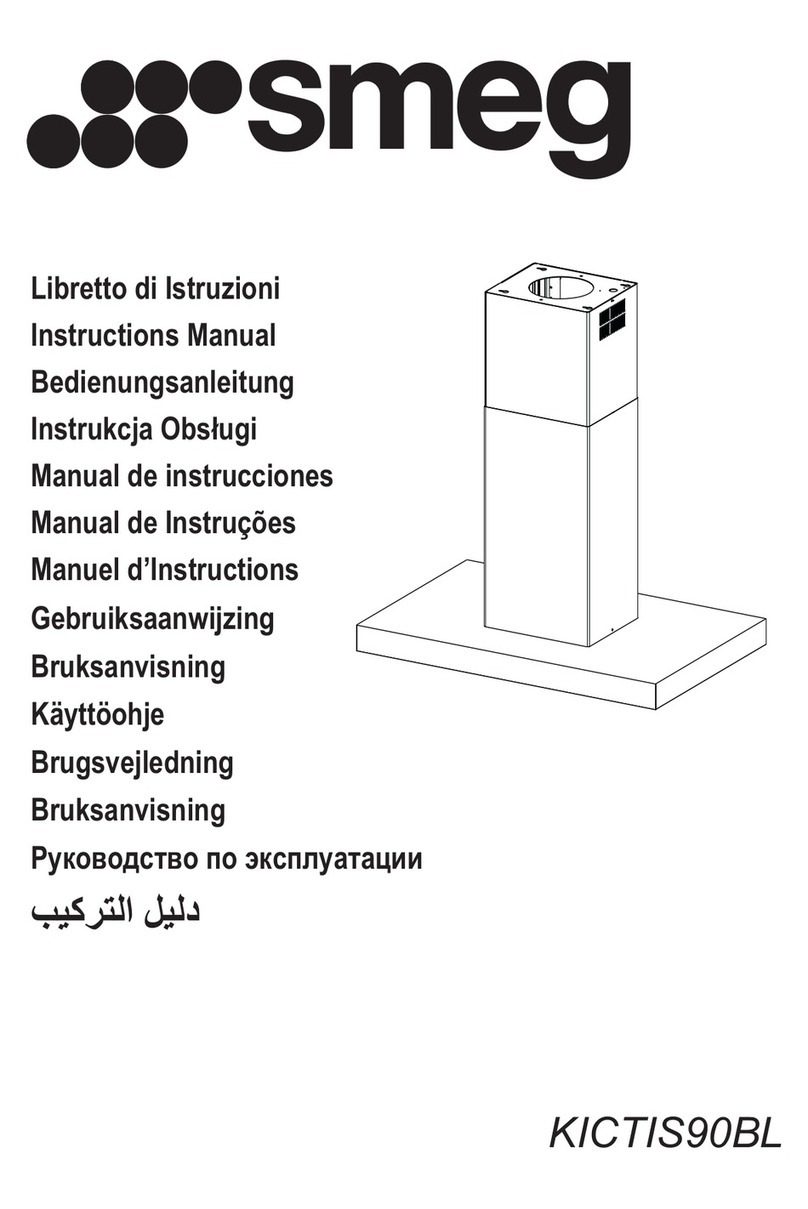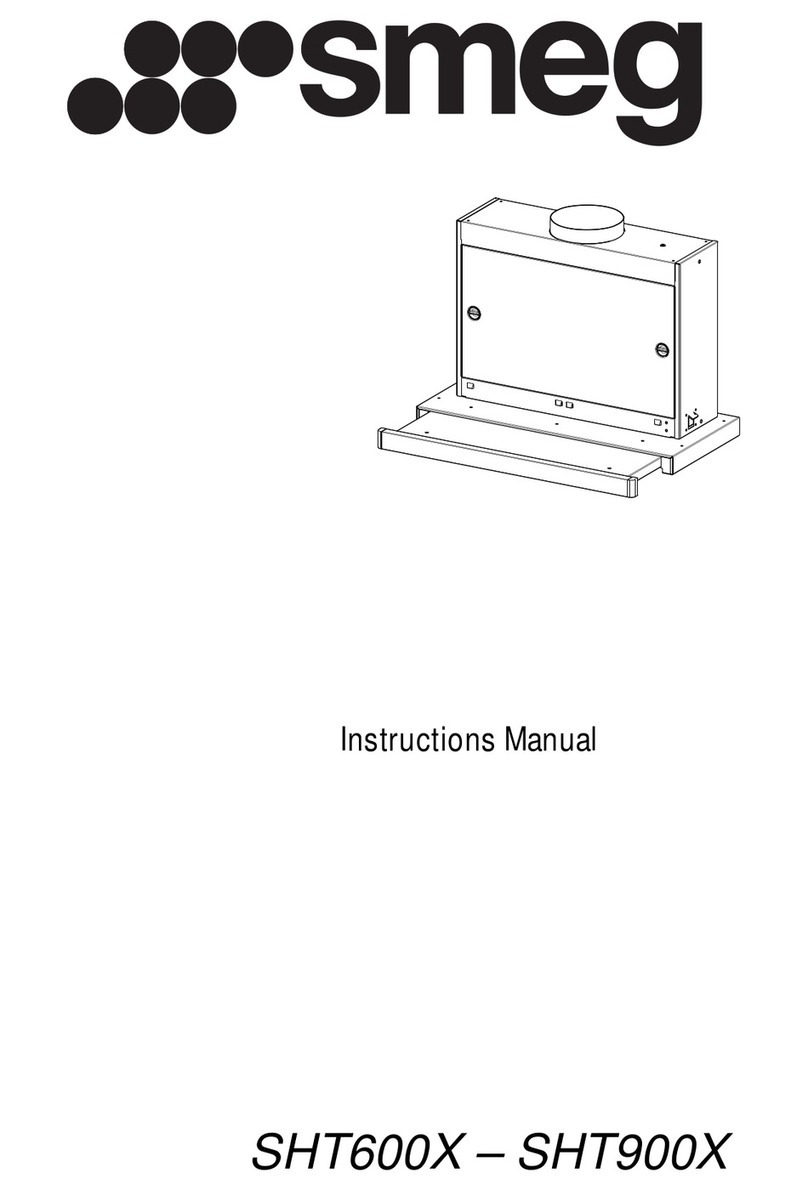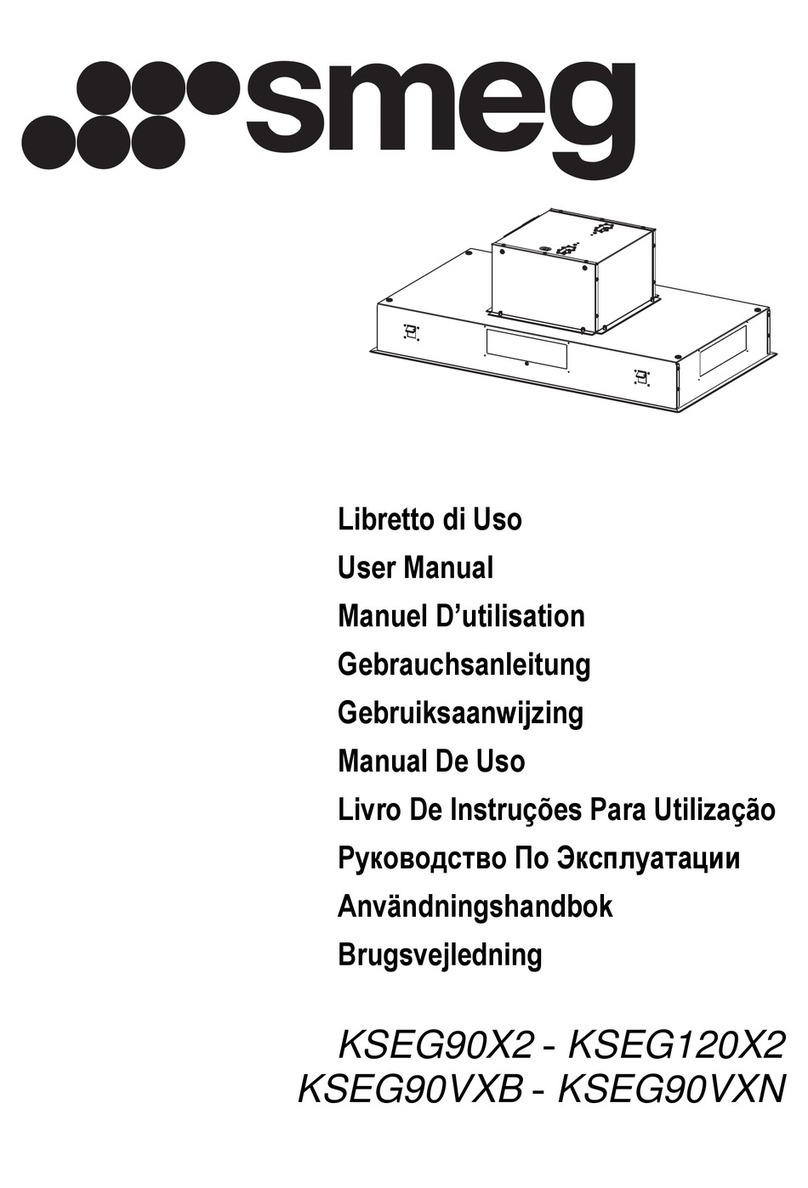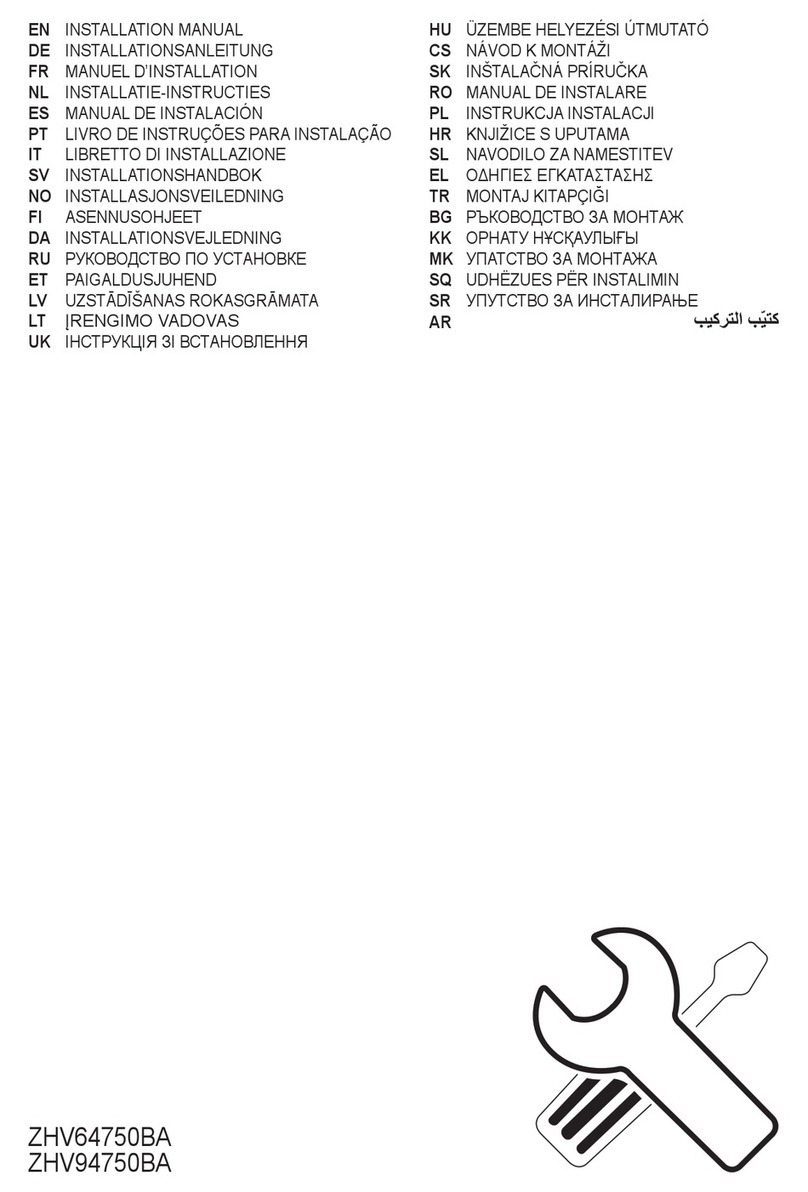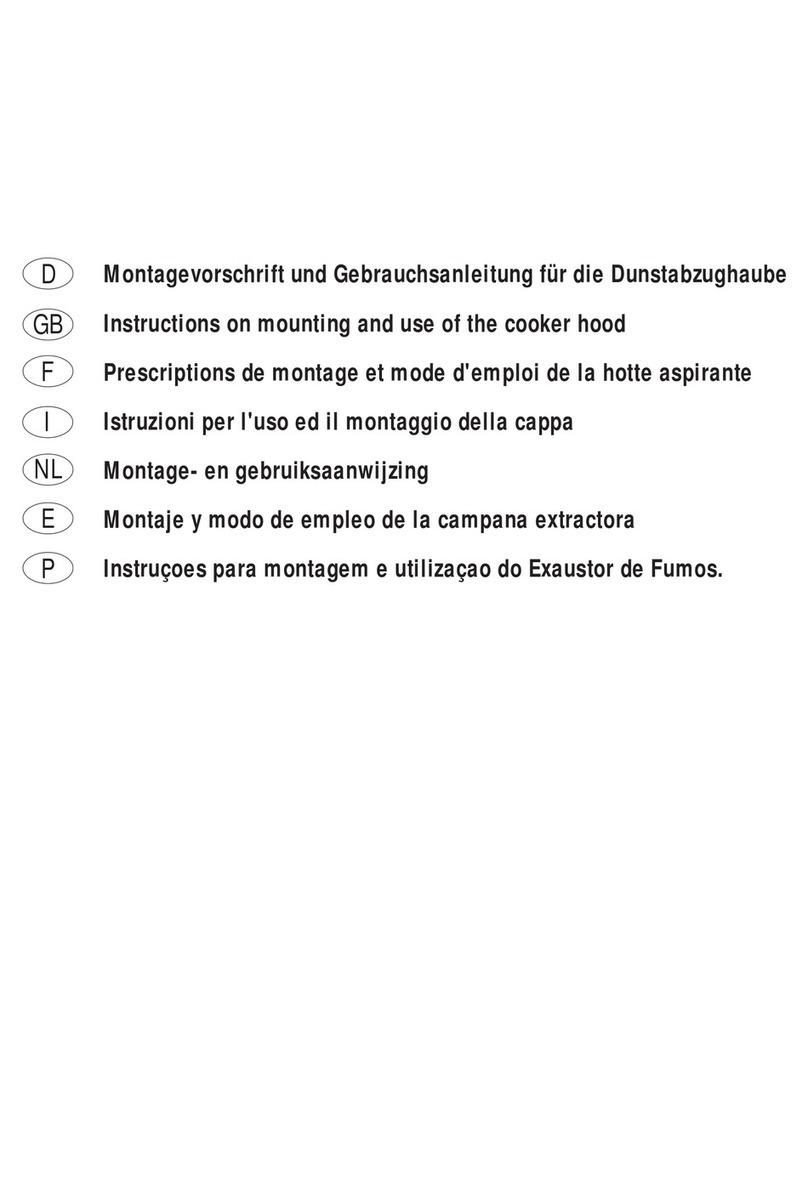6
efficiency of the rangehood.
The air must not be discharged into a flue that is used for exhausting fumes from
appliances burning gas or other fuels. Range hoods and other cooking fume extractors
may adversely affect the safe operation of appliances burning gas or other fuels
(including those in other rooms) due to back flow of combustion gases. These gases can
potentially result in carbon monoxide poisoning. After installation of a range hood or
other cooking fume extractor, the operation of open flued gas appliances should be
tested by a competent person to ensure that back flow of combustion gases does not
occur.
Ensure the ducting for the extractor function has the same diameter as the outlet hole all
the way through.
Keep young children from using, playing with or tampering with the rangehood. We
suggest older children and person with certain disabilities should be supervised if they
are using the rangehood.
Your rangehood is for domestic use only.
If the supply cord is damaged, it must be replaced by the manufacturer’s service agent
or similarly qualified technician in order to avoid a hazard.
Please dispose of the packing material carefully –children are especially vulnerable to
it.
Clean the rangehood regularly. Dirty oil and oil build up is an even greater fire risk.
It is recommended to put lids on pots and pans when cooking on a gas cooker.
Accessible parts may become hot when used with cooking appliances.
The manufacturer & supplier refuses to accept any responsibility for damages arising to
the rangehood, including it catching on fire, due to a failure to observe the fire safety
advice contained in this instruction booklet.
Remember that when in extraction mode, your rangehood is removing air from your
room. Ensure that proper ventilation measures are being observed.
Warning: Always ensure that the rangehood has been switched off before carrying out any
work, including replacing light bulbs.
Do not connect the ducting system of this appliance to any existing ventilation system
which is being used for any other purpose.
Do not install above a cooker with a high level grill.

